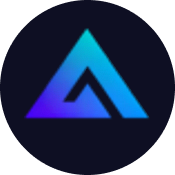In the expansive universe of blockchain technology, two platforms stand out for their innovative approaches to scalability and decentralized finance: NEAR Protocol and GMX. While NEAR emphasizes a scalable, user-friendly layer 1 blockchain with a focus on interoperability and AI integration, GMX operates as a decentralized derivatives exchange, revolutionizing perpetual trading. This detailed comparison aims to dissect their architectures, market positions, and use cases, offering crypto enthusiasts a clear understanding of their strengths and potential limitations.
Short on time? Jump to Near vs GMX Comparison
Understanding Near and GMX ?
NEAR Protocol is a high-performance blockchain designed to deliver scalability, usability, and security through innovative sharding technology and a proof-of-stake consensus mechanism. Its Nightshade 2.0 upgrade introduces stateless validation, significantly enhancing transaction throughput and reducing operational costs. NEAR's ecosystem is rapidly growing, with a focus on AI, NFTs, and DeFi, attracting considerable investment and adoption. On the other hand, GMX is a decentralized derivatives platform that enables trading of perpetual contracts across multiple blockchains, notably Arbitrum and Avalanche. It leverages liquidity pools and community governance, emphasizing transparency and user control in the DeFi derivatives space.
While NEAR aims to be an accessible and scalable layer 1 blockchain suitable for various decentralized applications, GMX specializes in providing a robust, permissionless environment for trading crypto derivatives. Both platforms exemplify the diverse applications of blockchain technology, from scalable infrastructure to complex financial products. Their development trajectories highlight differing priorities—NEAR’s focus on infrastructure and ecosystem growth, and GMX’s emphasis on decentralized trading and liquidity provision.
NEAR’s emphasis on user-friendly design and scalability positions it as an appealing choice for developers and users seeking a versatile blockchain environment. Its recent upgrades and ecosystem projects, particularly in AI and NFTs, demonstrate a forward-looking strategy. Conversely, GMX’s strength lies in its community-driven governance and innovative trading features, which cater to traders and liquidity providers seeking decentralized, permissionless access to derivatives markets.
Understanding these platforms’ technical foundations and market strategies provides valuable insights for investors and developers aiming to leverage blockchain’s full potential. Both NEAR and GMX are at the forefront of their respective niches, shaping the future of decentralized finance and blockchain infrastructure.
Key Differences Between Near and GMX
Core Functionality
- Near: NEAR functions primarily as a scalable, developer-friendly layer 1 blockchain that supports a wide range of dApps, from DeFi to AI. Its architecture emphasizes usability, interoperability, and high throughput, making it suitable for building diverse decentralized applications and ecosystems.
- GMX: GMX, in contrast, is a decentralized derivatives exchange focused on perpetual trading. It provides a permissionless platform for traders to speculate on asset prices using leverage, backed by liquidity pools and community governance, without the need for intermediaries.
Consensus Mechanism & Architecture
- Near: NEAR utilizes a Thresholded Proof-of-Stake (TPoS) consensus combined with Nightshade 2.0 sharding, enabling high scalability and low operational costs. Its stateless validation reduces resource requirements for validators, promoting decentralization.
- GMX: GMX employs a decentralized architecture with on-chain liquidity pools and multi-chain support, primarily on Arbitrum and Avalanche. Its security relies on community staking and governance, ensuring trustless operations in derivatives trading.
Market Focus & Use Cases
- Near: NEAR targets a broad ecosystem including NFTs, AI, DeFi, and dApps, aiming to make blockchain accessible and scalable for mainstream adoption. Its recent integrations and ecosystem projects reflect a focus on innovation and ecosystem growth.
- GMX: GMX focuses on decentralized derivatives trading, offering perpetual contracts with leverage, liquidity pools, and governance. Its primary use case is enabling users to trade crypto assets in a decentralized, permissionless manner, with a strong emphasis on community participation.
Ecosystem & Adoption
- Near: NEAR has attracted significant investment, with a robust ecosystem of developers, projects, and partnerships in AI and NFTs, supported by its user-friendly infrastructure.
- GMX: GMX boasts a high total value locked (TVL) exceeding $1 billion, with active governance and a large community of traders and liquidity providers. Its multi-chain support broadens its market reach.
Recent Developments & Roadmap
- Near: NEAR’s recent upgrade to Nightshade 2.0 and the launch of bridges connecting to other blockchains mark ongoing efforts to enhance scalability and interoperability. Its ecosystem initiatives reflect a long-term growth strategy.
- GMX: GMX plans to expand support to additional chains like Coinbase’s Base, and develop new AMMs for customizable pools. Its roadmap emphasizes security, user experience, and ecosystem expansion.
Near vs GMX Comparison
| Feature | ✅ Near | ✅ GMX |
|---|---|---|
| Main Functionality | General-purpose layer 1 blockchain supporting dApps, NFTs, AI, and DeFi. | Decentralized derivatives exchange for perpetual trading. |
| Consensus Mechanism | Thresholded Proof-of-Stake with Nightshade sharding and stateless validation. | Decentralized liquidity pools with community governance on multiple chains. |
| Target Use Cases | Ecosystem development, NFTs, AI, scalable dApps. | Crypto derivatives trading, liquidity provision, leveraged trading. |
| Ecosystem & Adoption | Growing developer community, strong focus on AI and NFTs, multi-billion market cap. | Large TVL (~$1.16 billion), active governance, multi-chain support. |
| Recent Upgrades | Nightshade 2.0, bridges to other chains, AI ecosystem expansion. | Support for new chains like Coinbase Base, improved AMMs, security enhancements. |
Ideal For
Choose Near: Developers and users seeking a scalable, versatile blockchain for building diverse decentralized applications and ecosystems.
Choose GMX: Traders and liquidity providers looking for a decentralized, permissionless platform for perpetual derivatives and leveraged trading.
Conclusion: Near vs GMX
The comparison between NEAR and GMX underscores the diversity within the blockchain landscape—NEAR’s focus on creating a scalable, ecosystem-friendly infrastructure contrasts with GMX’s specialization in decentralized derivatives trading. Both platforms leverage innovative technologies—NEAR’s Nightshade sharding and stateless validation for scalability, and GMX’s community-driven liquidity pools for trading efficiency.
While NEAR’s broader ecosystem approach makes it suitable for a variety of decentralized applications, GMX’s targeted focus on derivatives offers unique opportunities for traders and liquidity providers. Investors and developers should align their choices with their specific needs—whether building a scalable dApp ecosystem or engaging in decentralized trading—considering the platforms’ strengths, recent developments, and long-term visions.






